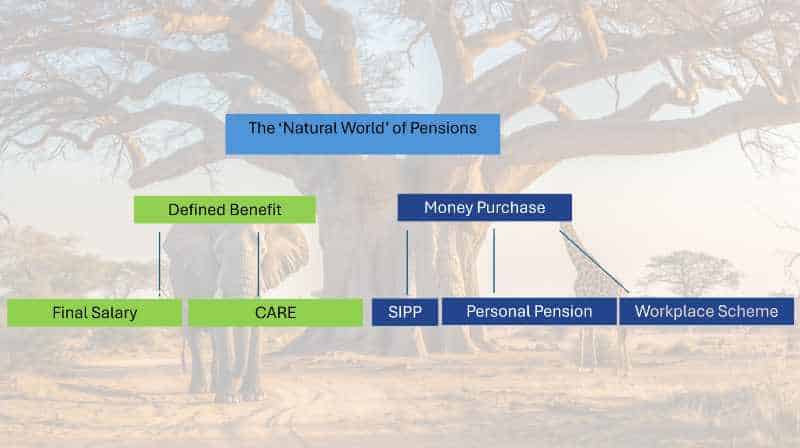
For many retirees I talk with being able to manage the cost of later-life care is a top priority for them. I understand why this is the case but with so much uncertainty around the need, timing and cost of it should you plan for the cost of later-life care?
Reports of the high cost of care, an ageing population and little government support can make it seem like a daunting financial challenge leaving many retirees worrying about the cost of care in later life. However, the statistics show that the risk of needing care for an extended period is lower than many anticipate.
The Total Cost of Later Life Care: What the Data Shows
One of the key concerns for retirees is the possibility of spending several years in a care home. However, the data suggests this fear may be overblown. The average age at which someone enters a care home is around 84 years old (TrustedCare Professional Services), and most people stay for far less time than expected. The average length of stay in a care home is about 2 to 2.5 years(Office for National Statistics, CareHQ). About 50% of residents spend less than one year in a care facility(Office for National Statistics).
While some people may need long-term care for a significant period, most will not face prolonged stays. This is reassuring for those concerned about spending many years in a care home, especially given the associated costs.
The Costs of Care: What to Expect
Even though long-term care may not be as prolonged as feared, it can still be expensive. On average, care home costs in the UK can vary depending on whether you need residential or nursing care:
- Residential care (which provides help with daily living activities but no nursing care) costs on average £800 per week, or £41,600 per year.
- Nursing care (which includes medical care provided by nurses) is more expensive, averaging about £1,200 per week, or £62,400 per year (Office for National Statistics, CareHQ).
Given that the average stay in a care home is 2 to 2.5 years, this translates to:
- A typical residential care stay of two years costing approximately £83,200.
- A typical nursing care stay costing around £124,800 for the same period.
These figures highlight the importance of planning for care costs, but also illustrate that not every retiree will face the worst-case scenario.
Balancing Retirement Priorities: Active Years vs. Care Costs
While it is important to account for potential care costs, focusing too much on what might happen in the future can detract from the joy of the early, active years of retirement. The years between 55 and 75 are often the most active and fulfilling for many retirees. With good health and fewer work or family responsibilities, these years present the best opportunity for travel, hobbies, and time spent with loved ones.
Statistically, the likelihood of needing intensive care before your mid-80s is relatively low. The focus of your retirement planning should therefore be on making the most of these active years while preparing for care needs in a balanced way. Life expectancy at 65 in the UK is about 85 for men and 87 for women (Office for National Statistics), and the majority of retirees remain independent for much of that time.
How Can Long-Term Care Be Funded?
Although the UK lacks a market for pre-funded long-term care insurance, there are several ways to fund care if it becomes necessary.
1. Personal Savings and Investments
Using personal savings or drawing down from your pension is one of the most common ways to fund care. By keeping part of your wealth in a flexible arrangement, such as an ISA or drawdown pension, you retain the ability to access funds for care as needed. If ISA and pension funds are large enough, appropriately invested and withdrawals to fund retirement remain sustainable, stock market growth can preserve sufficient capital to fund the cost of care if needed. If it isn’t, family members can benefit from anything that isn’t spent in your lifetime.
2. Downsizing
Another option many retirees consider to fund care costs is downsizing. Downsizing is something many people plan to do in later life anyway, often to reduce the time and cost spent on maintenance, cleaning and heating. It can also provide the added benefit of releasing equity to cover unexpected expenses, such as care fees.
This strategy helps fund care and can improve quality of life by allowing retirees to live in a home that better suits their changing needs. It’s a proactive way to make financial provision for care, without the need for complex products like equity release. However, it’s important to consider the costs associated with moving, such as stamp duty and legal fees and whether much equity will be released if the downsize involves moving to a more desirable (expensive) part of the country or neighbourhood.
3. Equity Release
If a downsize to release equity isn’t possible or managed in time, equity release allows you to unlock the value of your property while continuing to live in it. This can provide a lump sum or regular income to help cover care costs. While equity release can reduce the amount of inheritance you leave behind, it can be an effective tool for covering care costs without needing to sell your home outright.
4. Immediate Needs Annuities
An immediate needs annuity provides a guaranteed income for life to cover care costs, in exchange for a lump sum. You purchase the annuity once care needs become clear, ensuring that it covers care fees for life without risking depletion of your other savings. However, the market for such products is very limited. While this option provides peace of mind for those in care and their families, the cost becomes lost capital if the individual dies early
5. State Support
The UK government provides means-tested support for care costs. Currently, if your assets exceed £23,250, including the value of your home, you will be expected to fund your care costs privately until your assets fall below this threshold. However, the government has discussed introducing a £86,000 cap on care costs, which would limit personal care costs (but not accommodation or living expenses) to this amount.
The Delay in Implementing a Cap on Care Costs
The idea of a cap on care costs was first proposed in the 2011 Dilnot report. Lord Dilnot recommended capping personal care costs at £35,000 to prevent individuals from losing their homes to cover care fees. Over time, this proposed cap has risen to £86,000, but it has not yet been implemented. The delay is primarily due to the high cost of such a reform, with successive governments postponing the introduction of the cap amid competing priorities, including funding the NHS and managing public finances.
While the cap has been discussed for more than a decade, there is no certainty as to when, or if, it will be introduced. Until it becomes law, retirees need to plan as though they will need to cover their care costs themselves.
Prepare for Care, But Focus on the Present
While long-term care can be costly, the likelihood of needing it for an extended period is lower than many retirees fear. With an average stay of around 2 to 2.5 years, most people will not face care costs for much longer than this suggesting that worry about the cost of later life care is greater than the reality.
The key is to balance your retirement planning. It is important to have a flexible financial strategy that can accommodate care needs if they arise, but the focus should be on making the most of your active years. Enjoy your retirement by prioritising the things you love while ensuring that you have a sensible plan in place for potential care costs.
Photo by Sven Mieke on Unsplash






